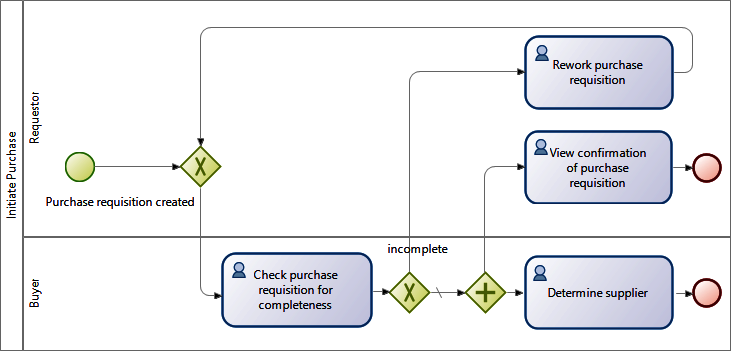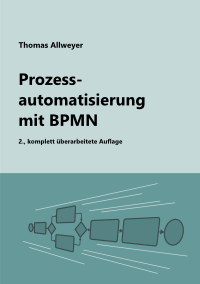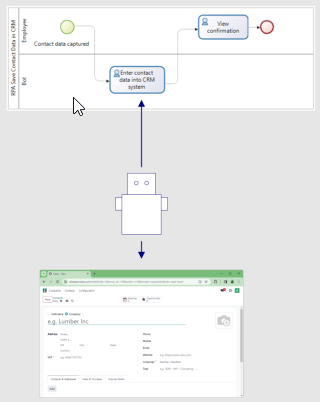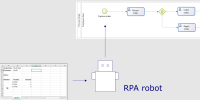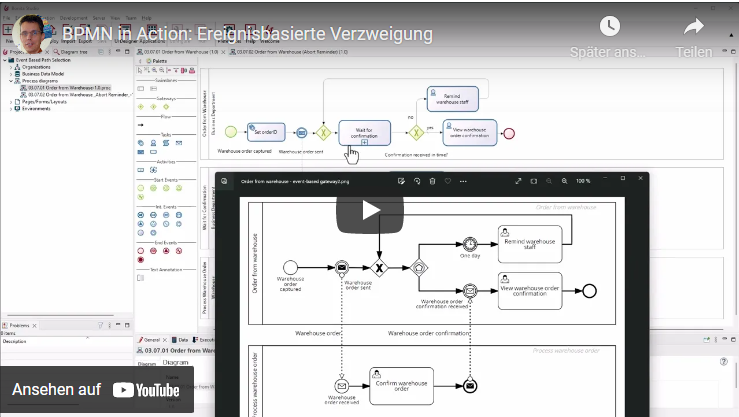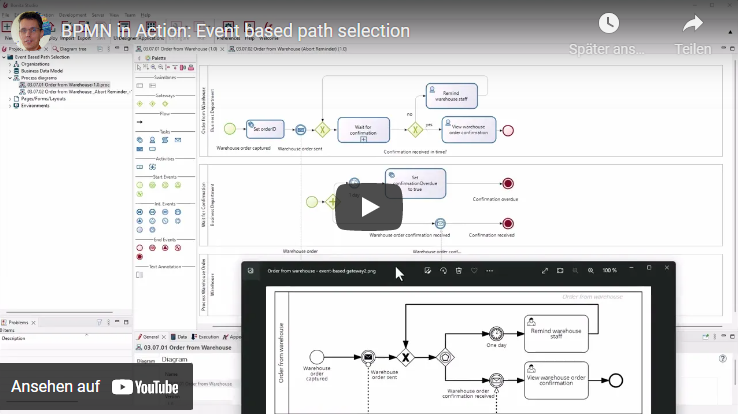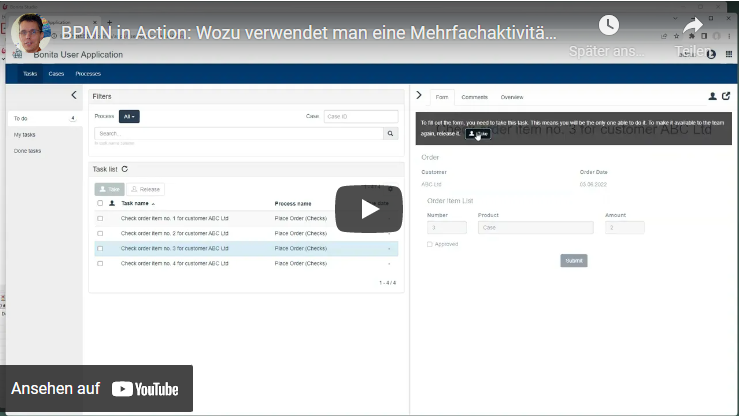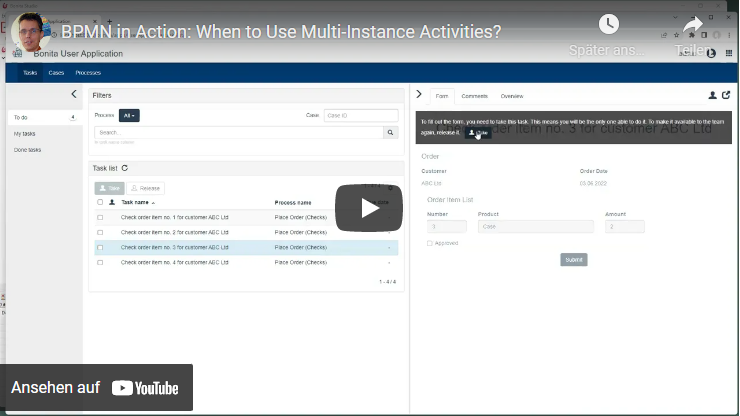Während es für die Modellierung von Prozessabläufen mit BPMN einen verbreiteten Standard gibt, existiert nichts Vergleichbares um Rollen zu definieren und die Personen auszuwählen, die die Arbeitsschritte in einem Prozess durchführen. Daher können diese Fragestellungen in verschiedenen Systemen zur Prozessautomatisierung unterschiedlich gelöst sein.
Zumindest ein Grundprinzip findet sich aber in den meisten Systemen: Die Benutzer-Tasks werden in verschiedenen Lanes (Bahnen) platziert und dadurch jeweils einer bestimmten Rolle zugeordnet. So werden etwa die Benutzer-Tasks, die in einer Lane „Einkauf“ angeordnet sind, den Mitarbeitern der Einkaufsabteilung zugeordnet.
